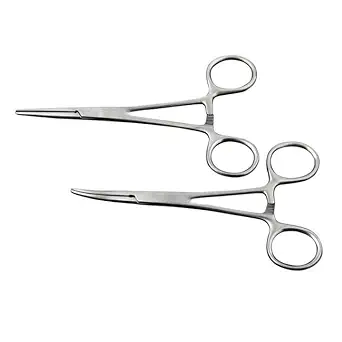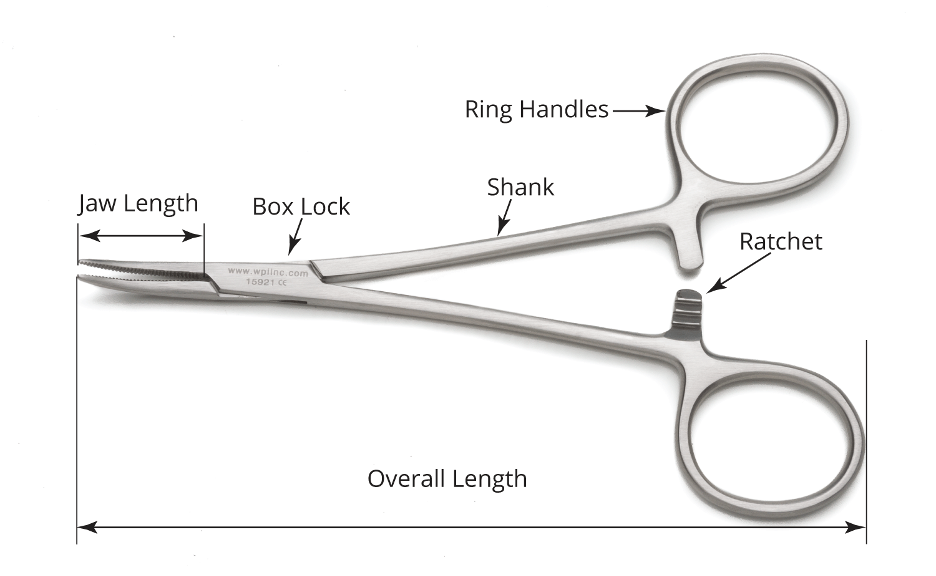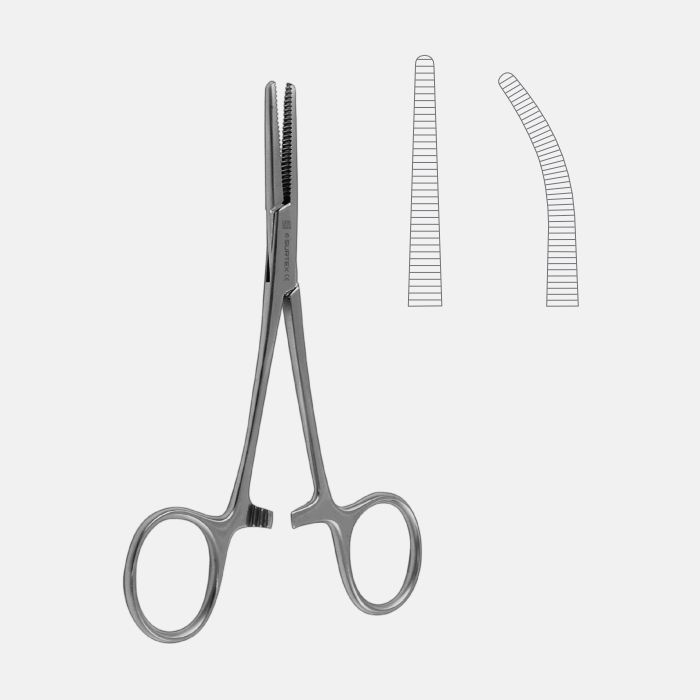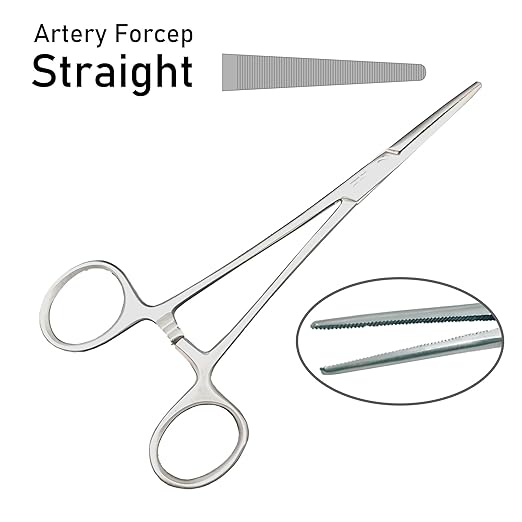Artery Forceps: Types, Parts, Uses & Functions | SurgiNatal

bySurginatal 07/10/2025, 05:44 pm
Artery Forceps: Types, Parts, Uses & Functions | SurgiNatal
Artery Forceps: Types, Parts, and Uses Explained
Have you ever thought about the scissor-like tools surgeons use during operations and wondered why they use scissors for cutting? Well, you might be surprised — the scissor-like tool is actually called artery forceps, and it’s not used for cutting. Instead, it’s designed to control bleeding during surgery, making it one of the most essential instruments in any surgical tray.
At our Medical Equipment Online Store, you can find a wide range of high-quality surgical tools like artery forceps, designed to ensure precision and safety in every medical procedure. These instruments play a vital role in preventing excessive blood flow, helping both the patient and the surgeon during critical moments.
In this blog, we will understand more about artery forceps and their parts, the different types like curved, straight, mosquito, Kocher, and their uses in surgeries. By the end, you’ll also know how to choose quality artery forceps for your medical practice.
What are Artery Forceps?

Artery Forceps is a surgical instrument used in surgeries to hold blood vessels and tissue to stop blood flow for a temporary period of time. It is also known as hemostat forceps or artery clamp.
What Are the Main Parts of an Artery Forceps?

-
Handle and Finger Rings
- Function: Allows the surgeon to grip and maneuver the forceps.
- Design: Typically features two finger rings, one for the thumb and the other for the middle or ring finger, providing a secure hold.
-
Ratchet Mechanism
- Function: Locks the jaws in place after clamping, freeing the surgeon's hands for other tasks.
- Design: Consists of interlocking teeth that engage when the handles are pressed together.
-
Box Joint/Hinge
- Function: Serves as the pivot point, allowing the jaws to open and close smoothly.
- Design: A sturdy joint that ensures precise movement and alignment of the jaws.
-
Shank
- Function: Connects the handle to the jaws, providing leverage and control.
- Design: The length and shape can vary depending on the specific type of artery forceps.
-
Jaws
- Function: The working end that grasps and holds tissues or blood vessels.
- Design: Can be straight or curved, depending on the surgical requirements.
-
Serrations or Teeth
- Function: Enhances grip on tissues, reducing slippage.
- Design: May feature fine grooves or interlocking teeth, especially in types like Kocher artery forceps.
-
Tip Design
- Function: Determines the reach and precision of the forceps.
- Design: Tips can be straight, curved, or angled, tailored for specific surgical needs.
Type of Artery forceps

There are different types of artery forceps for different - different surgical procedures. Their shape and size are the only differences.
- Have straight jaws and handles.
- Commonly used for general tissue or vessel clamping.
- Ideal for surface-level surgeries.
- Feature curved jaws to access deeper or narrower surgical areas.
- Commonly used in abdominal, orthopedic, or gynecological surgeries.
- Smaller in size, usually 12.5 cm long.
- Used for clamping small blood vessels and delicate tissues.
- Ideal for pediatric or minor surgical procedures.
-
Spencer Wells Artery Forceps

- One of the most widely used types in general surgery.
- Available in both straight and curved variants.
- Known for their precise control and strong grip.
-
Kocher’s Artery Forceps

- Have teeth at the tip for a firm grasp on tough tissues.
- Commonly used in orthopedic or vascular surgeries.
Artery Forceps Uses
Here’s Key function of Artery Forceps:
-
Clamping Blood Vessels
- The most common use of artery forceps is to temporarily stop blood flow during surgery, preventing excessive bleeding.
- This ensures a clear surgical field for precise procedures.
-
Holding Tissues
- Surgeons often use artery forceps to grip tissues securely while dissecting or suturing.
- This minimizes tissue trauma and improves accuracy.
-
Guiding Sutures
- Artery forceps help hold sutures or needles, making it easier to stitch delicate tissues without slipping.
-
Emergency Hemostasis
- In trauma or emergency situations, artery forceps are used to quickly control bleeding, buying time until further treatment is possible.
-
Specialized Applications
- Curved Artery Forceps: Access deep or narrow areas.
- Straight Artery Forceps: Ideal for surface-level or general surgeries.
- Mosquito Artery Forceps: Perfect for small blood vessels or pediatric cases.
- Kocher Artery Forceps: Grasp tough tissues securely, often in orthopedic or vascular surgeries.
Artery Forceps Application
Artery forceps are used in many types of surgeries because they help control bleeding and hold tissues safely. They are commonly used in:
- Heart and blood vessel surgeries (Cardiovascular surgery)
- Bone and joint operations (Orthopedic surgery)
- Brain and spine surgeries (Neurosurgery)
- Cosmetic or reconstructive surgeries (Plastic surgery)
- General surgeries like appendix or hernia operations
- Women’s health procedures (Obstetrics and Gynecology)
- Urinary system surgeries (Urology)
- Ear, nose, and throat surgeries (ENT or Otolaryngology)
How to Choose the Right Artery Forceps for Your Practice
Here are key criteria and tips:
-
Size & Length
- Use shorter versions (e.g. 12–14 cm) for surface or shallow wounds.
- Longer versions (18–25 cm) help in deep surgeries.
-
Tip Type & Serration
- Delicate vascular or neurosurgery: fine serrations or atraumatic designs (e.g. mosquito).
- Heftier tissues or larger vessels: toothed or heavier serrations (e.g. Kocher).
-
Curved vs. Straight
- Use curved where reach around structures is needed; straight for direct access.
-
Material & Finish
- High-grade surgical stainless steel (martensitic, austenitic steel) for durability and corrosion resistance.
- Satin or matte finishes reduce glare under OR lighting.
-
Ratchet & Joint Precision
- A smooth but firm ratchet mechanism is essential — not too loose, not too stiff.
- Box joints should have no play or misalignment over time.
-
Brand & Certification
- Prefer forceps from trusted brands (Romsons, Polymed, etc.) with ISO or CE markings.
- Ensure proper reprocessing/sterilization documentation and support.
-
Warranty & After-Sales Support
- Some brands offer long warranties (e.g. 30 years) for defects if the instrument is maintained well.
Conclusion
Artery forceps are more than just clamps — they are the unsung workhorses of surgery. They provide precision, control, and safety across surgical specialties.
Understanding what they are, their parts, their types, and how they’re used helps medical professionals choose the right tool for the job. For those also buying surgical instruments, you now have a solid basis to evaluate integrity, durability, and fit.
If you’re looking for reliable artery forceps from top brands like Romsons, Polymed, or Tynor, head over to SurgiNatal’s surgical instruments section and Buy Medical Products Online with confidence. Explore our curated collection tailored for safe and precise surgeries, ensuring quality, durability, and trusted performance every time.
Frequently Asked Questions
- What is the difference between hemostatic forceps and artery forceps?
Hemostatic forceps is a broader class; artery forceps are a subtype specialized for vascular clamping.
- Can artery forceps be reused after sterilization?
Yes, if made from surgical-grade stainless steel and maintained properly, they can endure repeated sterilization.
- What material are artery forceps made of?
Usually high-grade surgical stainless steel (martensitic or austenitic varieties) for strength and corrosion resistance.
- How do you maintain the grip and alignment of artery forceps?
Regular inspection, gentle cleaning, lubrication of joints, avoiding corrosion, and quality checks after sterilization.
- Are artery forceps and Kocher forceps the same?
Not exactly. Kocher artery forceps is a subtype with toothed jaws and stronger grip, used for tougher tissues or larger vessels.
- Which brand offers the best artery forceps in India?
Brands like Romsons, Polymed, and others available on SurgiNatal are widely trusted; look for ISO/CE certification, warranties, and surgeon feedback.




